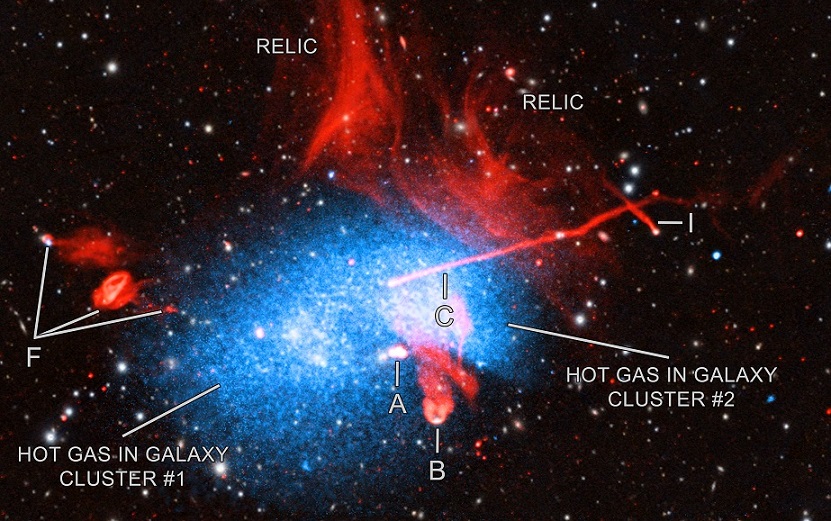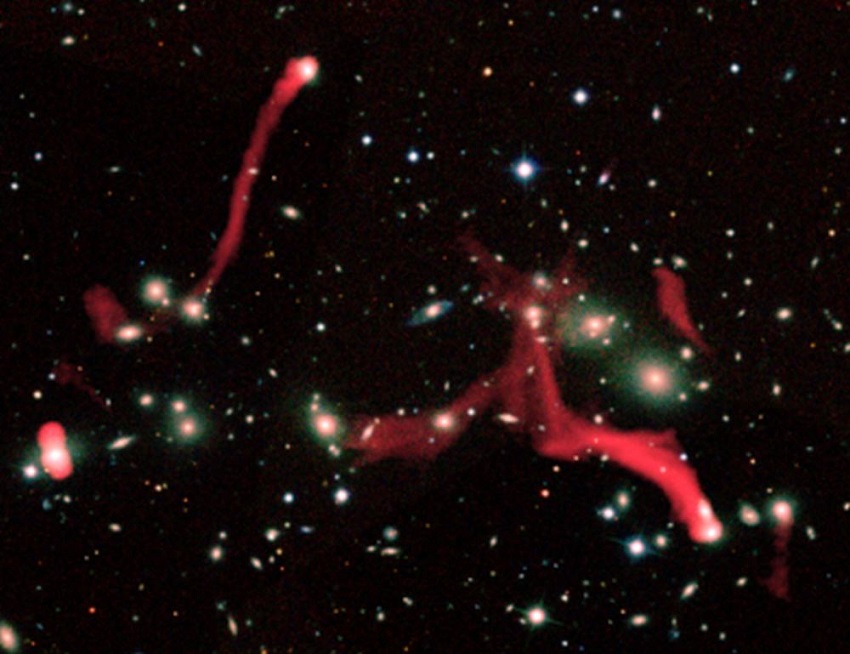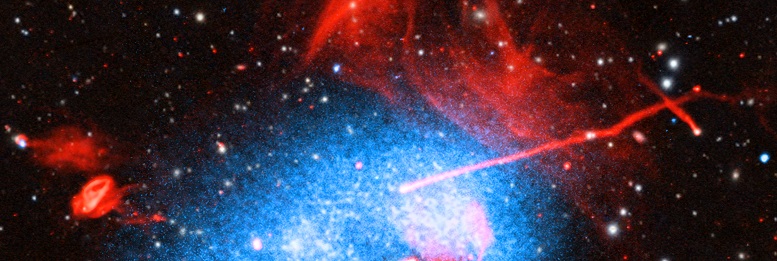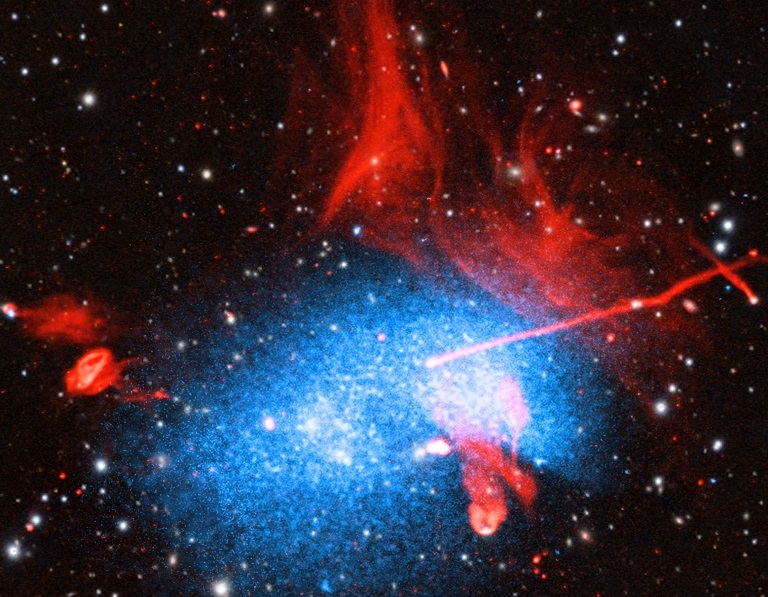Astronomers have captured a spectacular, ongoing collision between at least three galaxy clusters, reported NASA. Data from NASA’s Chandra X-
Astronomers have captured a spectacular, ongoing collision between at least three galaxy clusters, reported NASA.
Data from NASA’s Chandra X-ray Observatory, ESA’s (European Space Agency’s) XMM-Newton, and a trio of radio telescopes is helping astronomers sort out what is happening in this jumbled scene.
Collisions and mergers like this are the main way that galaxy clusters can grow into the gigantic cosmic edifices seen today. These also act as the largest particle accelerators in the universe.

The giant galaxy cluster forming from this collision is Abell 2256, located 780 million light years from Earth. This composite image of Abell 2256 combines X-rays from Chandra and XMM in blue with radio data collected by the Giant Metrewave Radio Telescope (GMRT), the Low Frequency Array (LOFAR), and the Karl G. Jansky Very Large Array (VLA) all in red, plus optical and infrared data from Pan-STARRs in white and pale yellow, reports NASA.
Astronomers studying this object are trying to tease out what has led to this unusual-looking structure. Each telescope tells a different part of the story. Galaxy clusters are some of the biggest objects in the universe containing hundreds or even thousands of individual galaxies.
In addition, they contain enormous reservoirs of superheated gas, with temperatures of several million degrees Fahrenheit. Only X-ray telescopes like Chandra and XMM can see this hot gas. A labeled version of the figure shows gas from two of the galaxy clusters, with the third blended too closely to separate from the others.

The radio emission in this system arises from an even more complex set of sources. The first are the galaxies themselves, in which the radio signal is generated by particles blasting away in jets from supermasive black holes at their centers, reports NASA.
These jets are either shooting into space in straight and narrow lines (those labeled “C” and “I” in the annotated image, using the astronomer’s naming system) or slowed down as the jets interact with gas they are running into, creating complex shapes and filaments (“A”, “B,” and “F”). Source F contains three sources, all created by a black hole in a galaxy aligning with the left-most source of this trio.
Radio waves are also coming from huge filamentary structures (labeled “relic”), mostly located to the north of the radio-emitting galaxies, likely generated when the collision created shock waves and accelerated particles in the gas across over two million light-years.

A paper analyzing this structure was published earlier this year by Kamlesh Rajpurohit from the University of Bologna in Italy in the March 2022 issue of The Astrophysical Journal, and is available online. This is Paper I in an ongoing series studying different aspects of this colliding galaxy cluster system, reports NASA.
Finally, there is a “halo” of radio emission located near the center of the collision. Because this halo overlaps with the X-ray emission and is dimmer than the filamentary structure and the galaxies, another radio image has been produced to emphasize the faint radio emission.
Paper II led by Rajpurohit, recently published in the journal Astronomy and Astrophysics and also available online, presents a model that the halo emission may be caused by the reacceleration of particles by rapid changes in the temperature and density of the gas as the collision and merging of the clusters proceed.

Paper III by Rajpurohit and collaborators will study the galaxies producing radio waves in Abell 2256. This cluster contains an unusually large number of such galaxies, possibly because the collision and merger are triggering the growth of supermassive black holes and consequent eruptions. More details about the LOFAR image of Abell 2256 will be reported in an upcoming paper by Erik Osinga, as reported by NASA.

